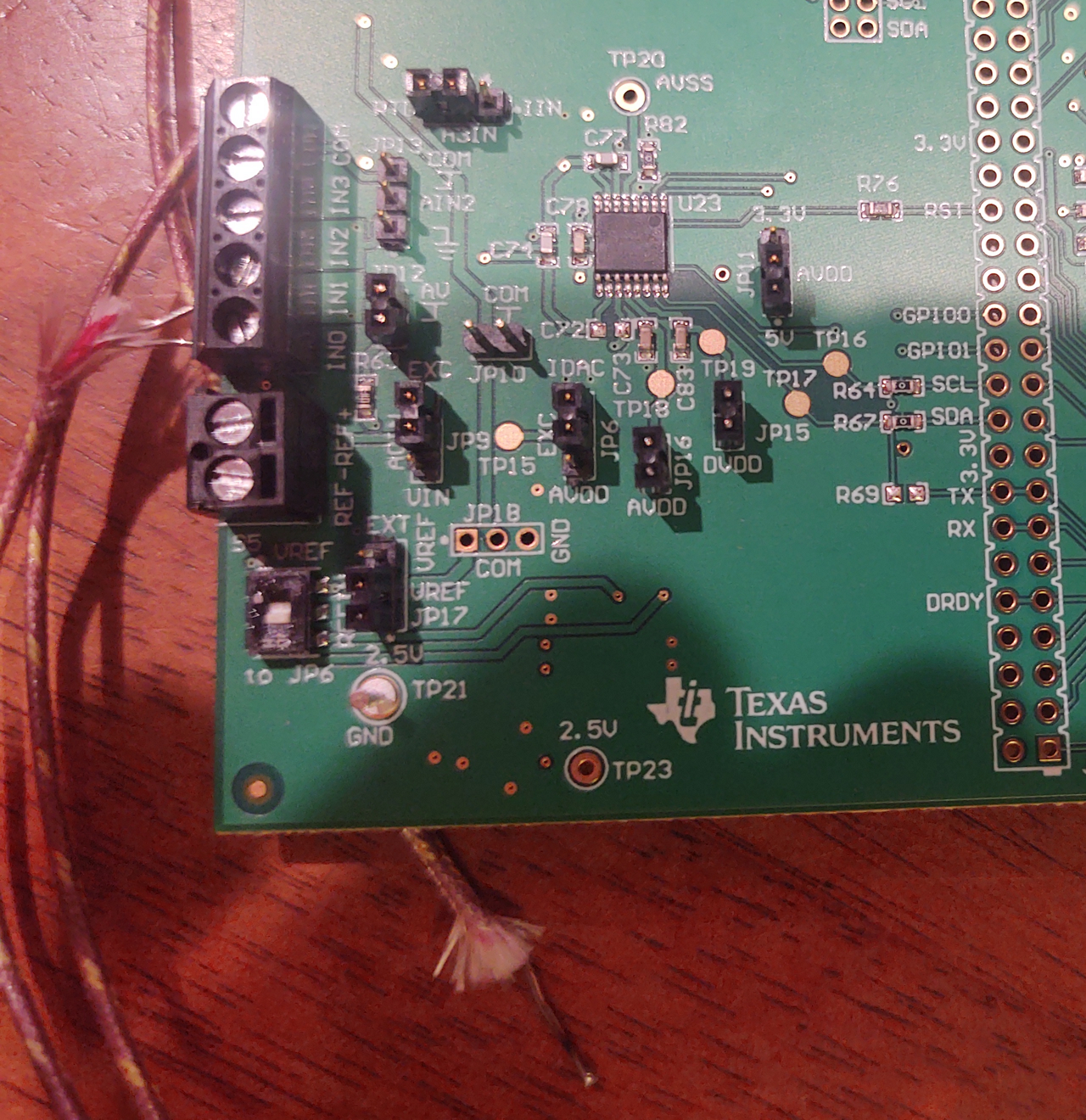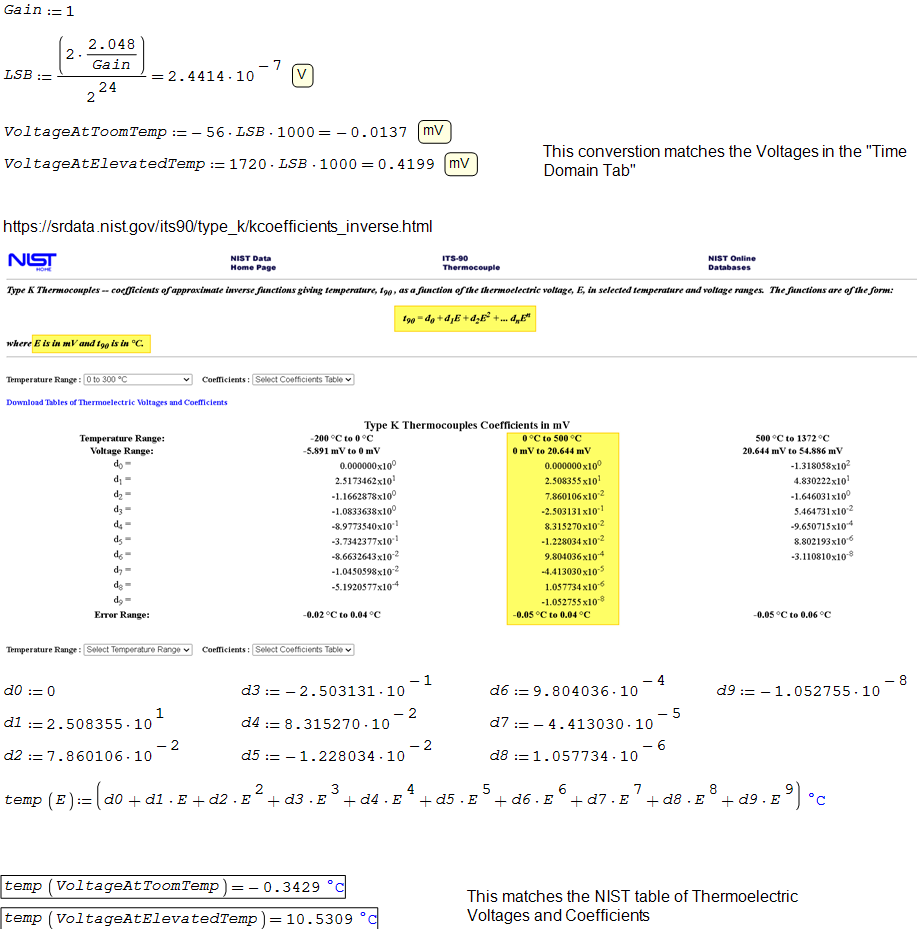Other Parts Discussed in Thread: ADS122C04
Hello,
I'm hoping you could help in setting and/or interpreting the output of the ADS122C04EVM when using a thermocouple with and without an analog sensor (LM35CAZ/NOPB). Looking at just the thermocouple on its own, the jumpers set as below and starting with the default register settings, at room temperature I'm seeing -0.3degC (original count of -56 converted to -0.0137mV and then to -0.3degC) and also at an elevated (breath) temperature I'm seeing 10degC (original count of 1720 converted to 0.4199mV and then to 10degC). It would make sense if this was with respect to the cold junction temperature, but from what I understand, that is not performed automatically especially with default setting of "TS=Disables Temperature Sensor."
So the questions are:
1) Is there a way to avoid having to convert from count to voltage by exporting the values graphed on the "Time Domain" tab's graph? I can't find a way to see those values other than as dots on the graph.
2) Why is the temperature so low?
3) In order to connect the output of LM35CAZ/NOPB to IN3 so as to measure an accurate cold junction, are the only necessary register changes "MUX->AINP=AIN3, AINN=AVSS" and "PGA_EN->PGA disabled and bypassed (Gain=1 to 4)"?
4) When providing a precision Vref=3.3V, are the only changes "VREF->External reference using the REFP and REFN inputs" and EVM Parameter "VRef (V)->3.3V"?


Thank you very much for your time,
Andrey

